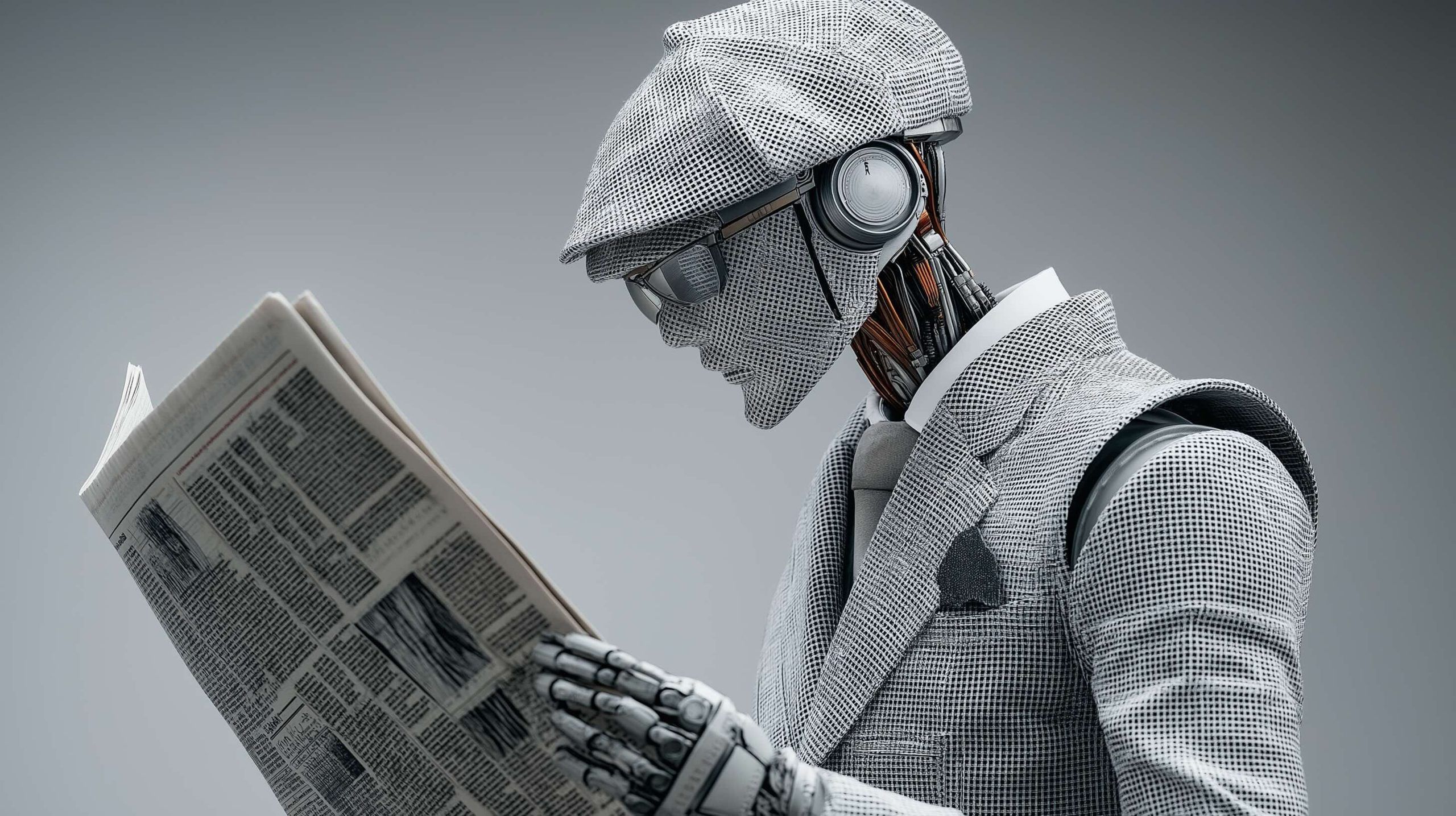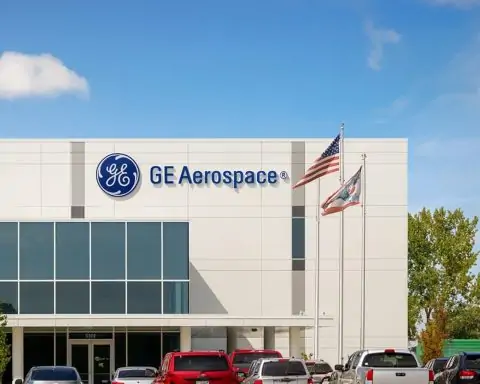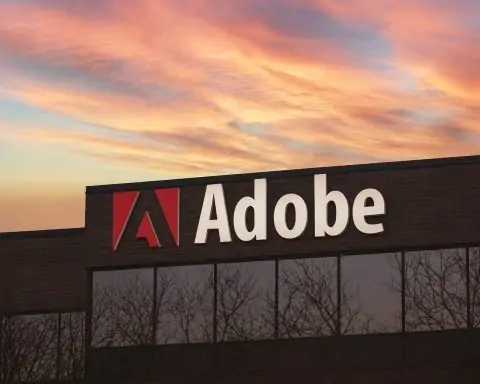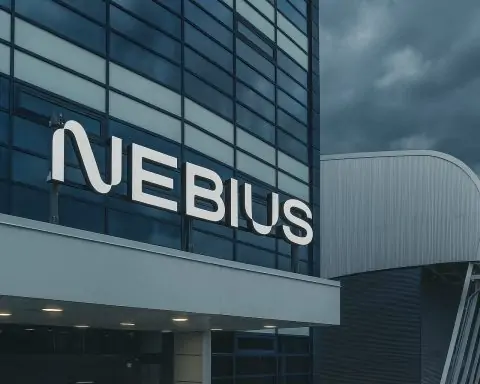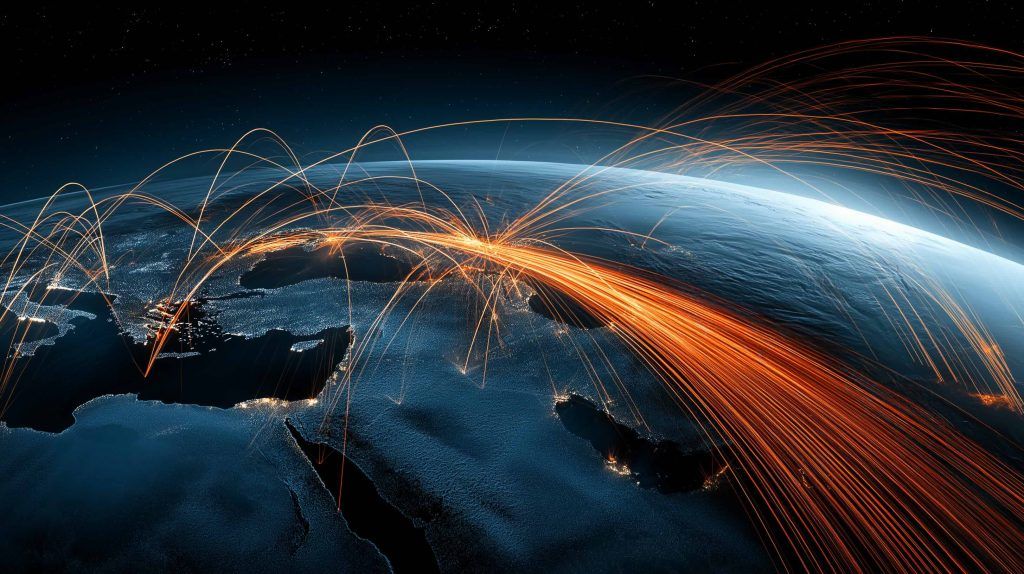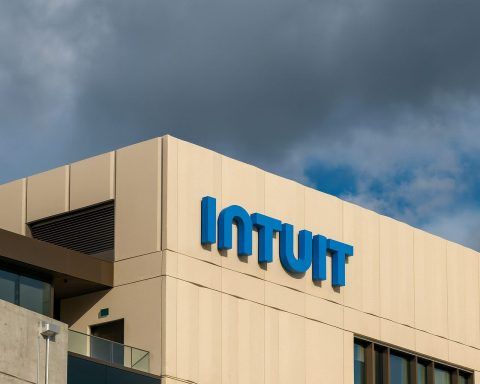- On July 23, 2025, President Donald Trump unveiled the U.S. AI Action Plan to pursue “global dominance” by promoting open-source AI models worldwide and slashing regulatory barriers to innovation.
- The plan includes tracking advanced AI chips to prevent exports to “countries of concern” such as China and links export controls to national security.
- OpenAI and Oracle announced Project Stargate, adding 4.5 gigawatts of new data-center capacity—enough to run over 2 million AI chips—as part of a plan valued at up to $500 billion to build 10 GW of AI supercomputing across the United States, with OpenAI reporting over 5 GW in development.
- Alibaba on July 23, 2025 launched Qwen-3 Coder, an open-source AI that reportedly outperforms domestic rivals and matches some capabilities of GPT-4.
- China announced a national cloud network to harness surplus compute power from thousands of local data centers, aiming for a government-run cloud platform by 2028, with Chen Yili describing a unified orchestration of the cloud.
- AI systems at the International Mathematical Olympiad achieved gold-medal status, with Google’s Gemini Deep Think and OpenAI’s experimental solver solving 5 of 6 problems in the 4.5-hour contest.
- MIT and Meta AI demonstrated an encoder-only image-generation approach that can inpaint or transform images by optimizing token representations, removing the need for a separate generator network.
- Google began negotiating licensing deals to pay publishers for training AI on their content, approaching about 20 major news organizations, as the New York Times sues OpenAI and a consortium sues Cohere.
- Amazon closed its AI research lab in Shanghai, and McKinsey barred its 1,000+ researchers in China from working on generative AI for clients amid U.S.–China tensions.
- On August 2, 2025, the EU’s AI Act begins applying to general-purpose AI models deemed “systemic,” imposing risk audits and training-data disclosures, while Meta has refused to sign the EU code of practice.
Biggest Announcements
White House Targets “Global Dominance” in AI: In Washington, the U.S. unveiled a sweeping AI Action Plan aimed at achieving “global dominance” in artificial intelligence [1]. Announced by President Donald Trump on July 23, the plan calls for open-source AI models to be freely available worldwide and vows to slash regulations deemed “burdensome” to innovation [2] [3]. It even warns that federal AI funds will bypass states with heavy-handed tech rules in favor of an “unencumbered” private sector [4] [5]. “AI is far too important to smother in bureaucracy at this early stage,” the plan declares, emphasizing the need to remove regulatory “red tape” [6]. Alongside deregulation, the blueprint pushes an international agenda: boosting AI exports to allies and countering China’s influence. One offshoot policy recommended the tracking of advanced AI chips to ensure they don’t end up in “countries of concern” like China [7] [8]. Lawmakers welcomed that hardline measure – “I was encouraged to see that…location verification mechanisms [are included] and align closely with our bipartisan Chip Security Act,” said Rep. Bill Foster, backing export controls to keep U.S. tech out of adversaries’ hands [9]. The administration’s aggressive stance – from expediting data center permits to prioritizing “winning the AI race” – was hailed by industry allies as a timely push to cement U.S. leadership [10] [11]. However, it also sparked debate over balancing innovation with oversight, setting the stage for clashes between federal ambitions and state-level AI laws.
Massive AI Infrastructure Bets: Reflecting the frenetic arms race in AI computing, OpenAI announced a colossal cloud expansion in partnership with Oracle. The deal will add 4.5 gigawatts of new data center capacity – enough to run over 2 million AI chips – to fuel OpenAI’s next-generation models [12] [13]. Codenamed Project “Stargate,” this initiative is part of an up to $500 billion plan (launched with White House backing in January) to build 10 GW of AI supercomputing across the U.S. [14] [15]. With Oracle’s help, OpenAI now has over 5 GW in development, exceeding initial commitments [16] [17]. The company says these mega–data centers will “accelerate America’s reindustrialization” – creating 100,000+ jobs – and ensure capacity for ever more powerful AI services [18] [19]. This billion-dollar bet on AI hardware underscores how critical raw computing power has become: from training frontier models like GPT to keeping up with rivals. It also highlights growing public-private alignment in AI – the Trump administration lauded robust infrastructure as “key to…national competitiveness” and had unveiled Stargate as a strategic project [20] [21]. Notably, analysts remain curious whether such lofty investments will fully materialize (skeptics point out funding gaps [22]), but the immediate takeaway is clear: OpenAI and its allies are racing to scale AI compute at an unprecedented level.
China’s Bold AI Moves: In Beijing, tech giant Alibaba made waves by open-sourcing its most advanced coding AI to date. On July 23 it launched Qwen-3 Coder, an AI model designed to autonomously generate and fix software code [23] [24]. The model is touted as excelling in “agentic AI coding tasks,” meaning it can tackle multi-step programming challenges on its own [25] [26]. Alibaba claims Qwen-3 outperforms domestic rivals (like models from DeepSeek and K2) and even matches some capabilities of top Western AIs such as OpenAI’s GPT-4 [27]. By open-sourcing this powerful coder, Alibaba is inviting global developers to use and improve it – a strategic bid to set an industry standard from China [28] [29]. The timing highlights intensifying East–West competition in AI: Chinese firms are rapidly rolling out sophisticated models to rival U.S. offerings [30] [31]. Indeed, China’s government is simultaneously investing in AI infrastructure at scale. Officials announced plans for a national cloud network to harness surplus computing power from thousands of local data centers [32] [33]. After a building boom led to idle capacity, Beijing is moving to connect and resell that computing might – crucial for its AI ambitions [34] [35]. “Everything will be handed over to our cloud for unified orchestration,” explained Chen Yili of a state think tank, describing the vision of a government-run cloud platform by 2028 [36]. The push aims to bolster China’s AI compute horsepower (a key front in the U.S.–China tech race) while reining in a glut of underutilized server farms. Together, Alibaba’s open-source offensive and Beijing’s infrastructure overhaul signal that China is doubling down on AI development – and doing so on its own terms.
New Research & Breakthroughs
AI Conquers Elite Math Competition: A milestone in AI research was achieved as AI systems matched world-champion problem solvers for the first time. Google’s DeepMind and OpenAI both announced their models attained gold-medal scores at the International Mathematical Olympiad – solving 5 out of 6 notoriously hard problems for high-school prodigies [37] [38]. This marks the first time ever that AI crossed the Olympiad’s top-tier threshold, signaling a dramatic leap in machine reasoning. Unlike past math AIs that relied on formal proofs, the new “general-purpose reasoning” models tackled problems entirely in natural language [39] [40]. Google’s team used a model called Gemini Deep Think – unveiled earlier in the year – to work through the 4.5-hour contest just like a human competitor [41]. OpenAI likewise built an experimental solver and, though it didn’t officially enter, it self-reported a gold-level performance verified by IMO graders [42] [43]. Researchers are astonished at how quickly AI’s logic skills are advancing. “I think the moment we can solve hard reasoning problems in natural language will enable the potential for collaboration between AI and mathematicians,” said Brown University professor Junehyuk Jung, a former Olympiad champion, suggesting AI may soon help tackle unsolved math puzzles [44]. OpenAI revealed its secret was massively “scaling up” the model’s thinking time and parallel computations – a costly technique that allowed the AI to reason longer and consider many approaches at once [45]. The result is a breakthrough hinting that AI’s problem-solving might will extend beyond math into physics and other scientific frontiers [46] [47]. It also raised eyebrows in the Olympiad community – organizers worked with AI developers this year to formally grade their answers, underscoring how AI is now competing (and collaborating) at humanity’s highest intellectual levels [48] [49].
Imaging AI Breakthrough: At the International Conference on Machine Learning, MIT scientists unveiled a new way to generate and edit images that challenges conventional wisdom. Typically, image-generating AIs use two components – an encoder to compress images into “tokens” and a generator to create new images from those tokens. But the MIT team discovered that a specialized encoder alone can do the job [50]. By iteratively optimizing the encoded tokens of an input picture, their method can “inpaint” or transform the image without any separate generative model [51] [52]. For example, they demonstrated turning a photo of a red panda seamlessly into a tiger just by refining the token representations, no fancy image diffuser needed [53] [54]. This approach essentially eliminates the generator network and leverages the power of encoders (also called tokenizers) beyond what was thought possible. The research – a collaboration between MIT’s CSAIL and Meta AI – suggests we could achieve creative image manipulation with far less training and compute than today’s massive generative models require [55]. In practical terms, future AI art tools might become more efficient and easier to train, since the heavy lifting can be done by optimizing compressed representations rather than running huge generation models. Experts see this as an exciting new direction in computer vision, one that “could vastly simplify image generation” by sidestepping the resource-intensive steps used by GANs and diffusion models [56] [57]. It’s a reminder that even amid headline-grabbing product launches, fundamental AI research continues to reinvent how these systems work under the hood.
Other Notable Advances: In the past 48 hours, a flurry of other AI research news broke. In medicine, researchers reported AI systems mapping hidden genetic links in human populations, offering insights into ancestry and disease (a breakthrough published on July 23). And in geoscience, an AI model detected tens of thousands of “hidden” micro-earthquakes beneath Yellowstone, a discovery that helps scientists better understand volcano monitoring. These developments, while niche, underscore AI’s expanding role in scientific discovery – from biology to geology. Each week seems to bring a new domain where AI is pushing the boundaries of knowledge, often uncovering patterns or solutions that humans missed.
Industry Reactions & Controversies
Corporate Retrenchment Amid Geopolitics: As AI goes global, companies are navigating tricky political terrain. This week saw U.S. firms pulling back from China under government pressure. Amazon confirmed it is shuttering its AI research lab in Shanghai, which had been a foothold in China since 2018 [58] [59]. The closure, first reported by the Financial Times, comes as Washington scrutinizes American tech operations in China. An Amazon scientist in Shanghai bluntly said his team was dissolved due to “strategic adjustments amid U.S.–China tensions” [60]. Similarly, consulting giant McKinsey has now barred its 1,000+ staff in China from working on any generative AI projects for clients [61] [62]. This internal ban (leaked via FT) was driven by U.S. authorities’ concerns about advanced AI and quantum tech in Chinese hands [63] [64]. McKinsey says it will still advise on “older” AI solutions, but not cutting-edge AI deployments in China [65] [66]. “We follow the most rigorous client selection policy in our profession,” a McKinsey spokesperson noted, implying the firm is treading carefully [67]. These moves mirror a broader Western tech retreat from China as AI becomes a strategic flashpoint. In the span of two days, we’ve seen a clear message: with geopolitical rivalry heating up, even tech giants and consultancies are rethinking their cross-border AI engagements to avoid being caught in the U.S.–China tech crossfire [68].
Media vs AI – Calls for a Truce: A major controversy in the content world is boiling over: news publishers fear AI firms are profiting off their work without compensation, dubbing it an impending “AI armageddon” for journalism. Now, Google appears ready to make peace. Reports emerged that Google is in talks to pay publishers for the use of their content to train and power AI tools [69] [70]. The search giant has approached about 20 major news organizations with a pilot licensing deal, after largely sitting on the sidelines while OpenAI, Meta, and startups struck payment agreements for data [71] [72]. Publishers have complained that AI-generated snippets – like Google’s own “AI Overviews” atop search results – siphon traffic and ad revenue from original news sites [73] [74]. Some have even taken legal action: The New York Times is suing OpenAI, and a consortium of media firms filed a copyright suit against AI company Cohere for ingesting articles without consent [75] [76]. Facing this pressure, Google recently inked a deal with the Associated Press and is now exploring broader licenses to avoid courtroom battles. “The tech industry may be acknowledging the need to collaborate more openly with news organizations,” observed one media tech CEO, noting a growing push for “equitable compensation” for content used in AI [77] [78]. If Google moves forward, it could mark a turning point: big AI players tacitly admitting that human-created data has value worth paying for. This would be a significant concession to publishers and creators, potentially setting norms (or at least interim fixes) in the escalating content vs. AI showdown.
Expert and Public Backlash: The rapid-fire announcements of the past two days have drawn a mix of excitement and criticism from experts and the public. Many in the AI community hailed the math Olympiad feat and open-sourcing of models as positive steps – proof of progress and democratization. But others raised ethical and safety concerns. For instance, some observers worry that open-sourcing powerful code generation models like Alibaba’s could enable misuse (e.g. automated hacking), if proper safeguards aren’t in place. On the policy side, Trump’s deregulation-heavy plan sparked debate about oversight: will loosening rules on AI development invite more algorithmic bias or unsafe AI deployments? Civil society groups note the plan’s emphasis on countering “ideological bias” in AI systems could pave the way for politicized meddling in how AI models handle content [79] [80]. Environmental advocates, too, reacted to the pledge to fast-track data center construction, warning about the energy footprint of these massive AI server farms. Meanwhile, the public continues to grapple with AI’s impact on jobs and creativity – a conversation amplified by Hollywood strikes earlier this year over AI’s role in scriptwriting and acting. In short, these 48 hours of AI news, while thrilling for tech enthusiasts, also intensified public scrutiny on AI’s societal implications. Policymakers are being urged to match bold pro-AI strategies with equally bold guardrails to ensure AI develops in a human-centric, responsible way. The friction between breakneck innovation and cautious regulation remains the defining tension in the AI world – and it was on full display in the reactions to this week’s headlines.
What’s Next?
- Rolling Out Policies: The U.S. AI Action Plan won’t remain just ink on paper – over 90 federal actions across innovation, infrastructure, and security are slated to kick off in the coming weeks and months [81]. Agencies from the Office of Management and Budget to the FCC have been tasked with reviewing and pruning any rules that “unnecessarily hinder AI development”, so expect regulatory shake-ups. The White House is also planning an AI summit with allies to promote its vision of “American values” in global AI governance [82] [83]. How state governments respond (especially those with strict AI laws) will be a key storyline to watch.
- Regulatory Deadlines Abroad: On August 2, the EU’s AI Act begins to bite: providers of general-purpose AI models deemed “systemic” must start complying with new rules [84] [85]. That means companies like OpenAI, Google, Meta, and Anthropic will, for the first time, face legal requirements in Europe – from conducting risk audits to disclosing training data. Tensions are high: just days ago, Meta refused to sign the EU’s voluntary AI code of practice, with an executive calling Brussels’ approach “overreach” that could “stunt” AI development [86] [87]. As the EU holds firm on its timeline, expect a potential clash (or compliance scramble) as AI firms adjust to the world’s first comprehensive AI law.
- Next-Gen AI Launches: Technologists anticipate a new wave of AI model releases later this year. Google’s Gemini – a next-gen model rumored to combine DeepMind’s reasoning prowess with massive scale – is hotly awaited and could be unveiled soon, especially after the math Olympiad proof-of-concept [88] [89]. OpenAI, for its part, has hinted at progress toward GPT-5, though it remains tight-lipped on timelines (OpenAI has said it won’t release certain advanced capabilities until it can ensure safety [90]). We might also see more domain-specific AIs (think medical diagnosticians or legal assistants) from startups looking to fill industry niches. With the compute boost from projects like Stargate, the technical foundation is being laid for larger and more creative AI systems – possibly capable of multimodal understanding, longer conversations, or expert-level decision-making.
- Continuing AI Gold Rush: The financial frenzy around AI shows no sign of abating. Chipmakers are riding high on surging demand – case in point, South Korea’s SK Hynix just posted record profits and is doubling down on producing high-bandwidth memory for AI [91] [92]. Its CFO noted capital spending will increase to ramp up HBM chip output as customers stockpile for the next generation of AI models [93]. This trend suggests that supply chain and investment stories (from NVIDIA’s latest GPUs selling out, to cloud providers expanding server capacity) will remain front-page news. Moreover, venture capital and Big Tech investment in AI startups is expected to keep breaking records, though some analysts caution of a possible market correction if hype gets ahead of reality.
- Global AI Diplomacy: Finally, look for more high-profile diplomacy around AI. International forums are increasingly treating AI as a critical issue – a Global AI Safety Summit in the UK is reportedly in the works to convene world leaders and top labs on managing AI risks. The U.N. has also hinted at creating an AI advisory body. With the U.S. explicitly positioning AI leadership in terms of national power, and China and the EU forging their own paths, the rest of 2025 will see efforts to establish rules of the road for AI. This could mean new bilateral agreements (for example, on research collaboration or export controls) and heated debate over banning AI arms races. In short, the whirlwind of the last two days is not an outlier but a sign of the times: AI is now a geopolitical and economic battleground, and rapid developments are the new normal.
As this 48-hour AI saga shows, progress is a double-edged sword – each breakthrough or bold plan begets new challenges and questions. From lab victories to boardroom strategies and government decrees, the world of artificial intelligence is evolving at breakneck speed. Buckle up, because the coming weeks promise even more drama in this global AI revolution [94]. Whether you’re an AI researcher, an investor, or just a concerned citizen, staying informed will be essential – the next major AI news is likely just around the corner. And as always, we’ll be here to round up the highlights (and lowlights) of everything you need to know in the AI universe.
Sources: Global news reports and press releases from July 23–24, 2025, including Reuters [95] [96] [97] [98] [99] [100], MIT News [101] [102], CFO Dive [103] [104], and others.
References
1. www.reuters.com, 2. www.reuters.com, 3. www.cfodive.com, 4. www.reuters.com, 5. www.cfodive.com, 6. www.cfodive.com, 7. www.reuters.com, 8. www.reuters.com, 9. www.reuters.com, 10. www.cfodive.com, 11. www.cfodive.com, 12. www.reuters.com, 13. www.reuters.com, 14. www.reuters.com, 15. www.reuters.com, 16. www.reuters.com, 17. www.reuters.com, 18. ts2.tech, 19. ts2.tech, 20. ts2.tech, 21. www.reuters.com, 22. www.reuters.com, 23. www.reuters.com, 24. www.reuters.com, 25. www.reuters.com, 26. www.reuters.com, 27. www.reuters.com, 28. ts2.tech, 29. ts2.tech, 30. ts2.tech, 31. ts2.tech, 32. www.reuters.com, 33. www.reuters.com, 34. www.reuters.com, 35. www.reuters.com, 36. www.reuters.com, 37. www.reuters.com, 38. www.reuters.com, 39. www.reuters.com, 40. www.reuters.com, 41. www.reuters.com, 42. www.reuters.com, 43. www.reuters.com, 44. www.reuters.com, 45. www.reuters.com, 46. ts2.tech, 47. ts2.tech, 48. www.reuters.com, 49. www.reuters.com, 50. ts2.tech, 51. ts2.tech, 52. ts2.tech, 53. ts2.tech, 54. ts2.tech, 55. ts2.tech, 56. ts2.tech, 57. ts2.tech, 58. www.reuters.com, 59. www.reuters.com, 60. www.reuters.com, 61. www.hindustantimes.com, 62. www.hindustantimes.com, 63. ts2.tech, 64. ts2.tech, 65. www.hindustantimes.com, 66. www.hindustantimes.com, 67. ts2.tech, 68. ts2.tech, 69. www.pymnts.com, 70. www.pymnts.com, 71. www.pymnts.com, 72. www.pymnts.com, 73. www.pymnts.com, 74. www.pymnts.com, 75. www.pymnts.com, 76. www.pymnts.com, 77. ts2.tech, 78. ts2.tech, 79. www.cfodive.com, 80. www.cfodive.com, 81. www.cfodive.com, 82. www.cfodive.com, 83. www.cfodive.com, 84. www.reuters.com, 85. www.reuters.com, 86. techcrunch.com, 87. techcrunch.com, 88. www.reuters.com, 89. www.reuters.com, 90. www.reuters.com, 91. www.reuters.com, 92. www.reuters.com, 93. www.reuters.com, 94. www.cfodive.com, 95. www.reuters.com, 96. www.reuters.com, 97. www.reuters.com, 98. www.reuters.com, 99. www.reuters.com, 100. www.reuters.com, 101. ts2.tech, 102. ts2.tech, 103. www.cfodive.com, 104. www.cfodive.com
